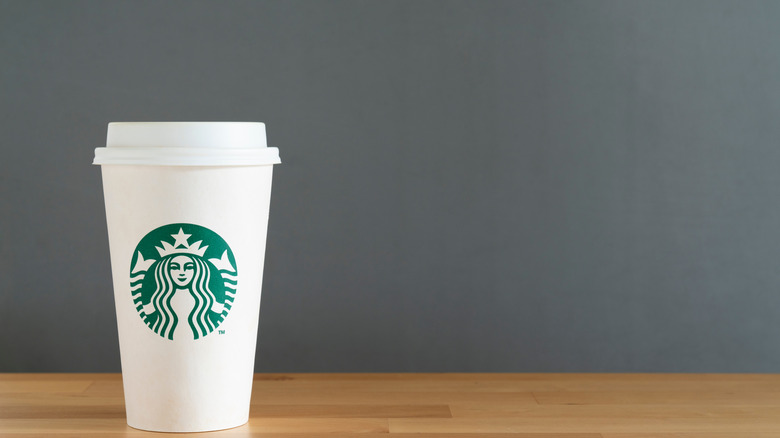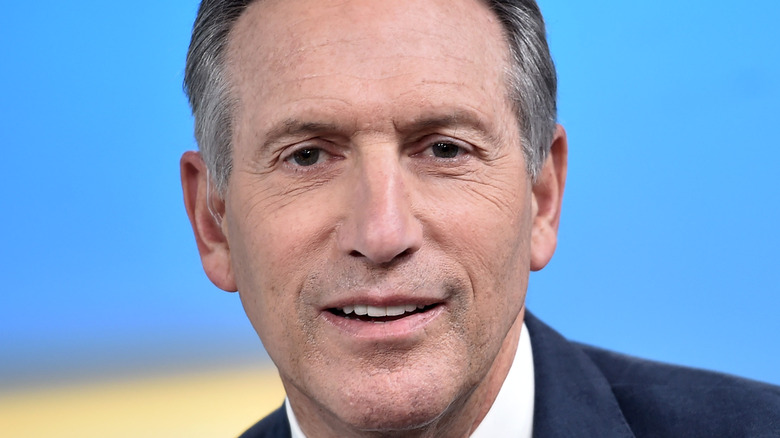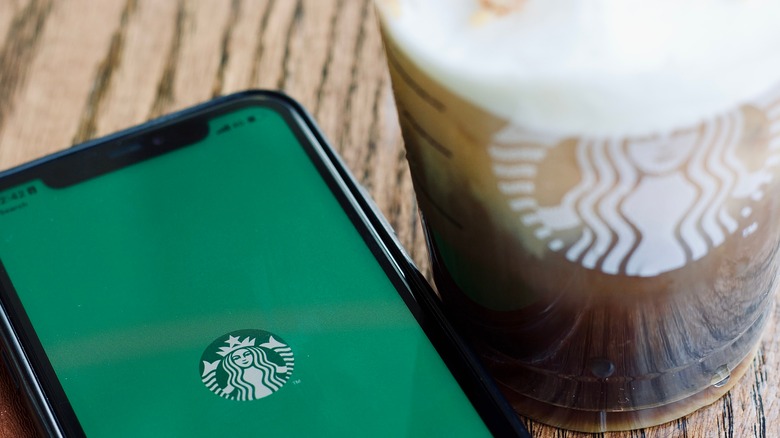What Starbucks Did To Elevate Efficiency During The 2008 Recession
We may receive a commission on purchases made from links.
It's déjà vu at Starbucks.
The Seattle-based coffee giant recently rolled out its Starbuck's reinvention plan, which includes a new "Siren System" that dispenses ice and milk along with new, faster blenders to eliminate bending and lifting by its baristas while easing congestion behind the counter. This new streamlined process cuts drink prep time by more than half, with the Grande Mocha Frappuccino clocking in at 36 seconds and 13 steps vs. the original 87 seconds and 16 steps (via Starbucks). Seattle Times reports this and other changes being rolled out in its new Tryer Center (per Starbucks) are in response to market pressures, which is prompting the company to pivot from community to convenience.
This feels efficiency push feels familiar.
In 2008, the U.S. and broader world economy took the worst economic hit since the Great Depression (via Insider). The subprime mortgage industry, along with hyper-risky investments, caused huge banks to fail, precipitating a string of government bailouts that when taken together totaled the largest in U.S. history (per ProPublica).
Starbucks was not immune to market pressures, shuttering a total of 900 locations. With profits down 28% and the economy reeling, Starbucks founder Howard Schultz returned as CEO of the coffee chain to guide it through the turbulent time (via Business Today).
Starbucks' lean team focused on efficiency
Back at the helm, Schultz didn't blame the slowing sales on the economic turmoil (or higher dairy prices, like his predecessor, per Business Today), rather he thought the chain became bureaucratically bloated because of its expansion, reports Seeking Alpha. To fix this, Schultz said he wanted a return to Starbucks' customer-centic approach, launching the "My Starbucks Idea" campaign to listen to what their customers wanted in a coffee shop.
But that public-facing initiative wasn't the only one Starbucks launched. In 2009, their "vice president of lean thinking" at the time, Scott Heydon, brought Japanese-style efficiency, which he learned by studying Toyota's model, to the coffee house (via Wall Street Journal). This method, called Kaizen, maintains seemingly small efficiency improvements lead to an outsized impact (via LinkedIn).
According to the Wall Street Journal, members of Starbucks' "lean team" hauled Mr. Potato Head toys on a tour of national stores to illustrate the principles to the managers. The idea was to put the toy together in under 45 seconds. By keeping the all pieces in close proximity, efficiency increased. Managers realized their Frappuccino stations were ripe with inefficiencies, causing baristas to bend and reach for things during the drink-making process, cutting down on productivity.
The inefficiencies extended to how partners prepped to open stores to where coffee beans were stored.
Efficiency once again leads to changes at Starbucks
Heydon's embrace of Kaizen worked hand-in-hand with Schultz's customer-cetric push. By minimizing the time it took for Stabucks' baristas to make, say, a Pumpkin Spice Latte, meant more time for them to interact with customers, leading to a better overall experience. It also meant baristas could make more drinks faster; The same amount of employees could churn out a higher volume of drinks in the same amount of time (via Wall Street Journal).
With Schultz once again interim CEO, Starbuck's latest efficiency push feels like a throwback to 2008, but this time with a focus on technology. In addition to the Siren System, the coffee chain is rolling out the Clover Vertica brewer, which grinds and brews a fresh cup of coffee in 30 seconds, eliminating the old method of brewing full pots every 30 minutes, cutting back on both labor and waste. Cold brew is also getting an overhaul through their Cold Pressed Technology, a low-pressure immersion extraction method that eliminates the need for hot water. This cuts the reported 20 hours and 20 steps it takes to make cold brew coffee down to four steps and just seconds of prep (via Starbucks).
The customer-centric approach this time leans heavily on technology, including a more seamless experience for rewards members, from dedicated drive through lanes to recommendations based on past orders.


